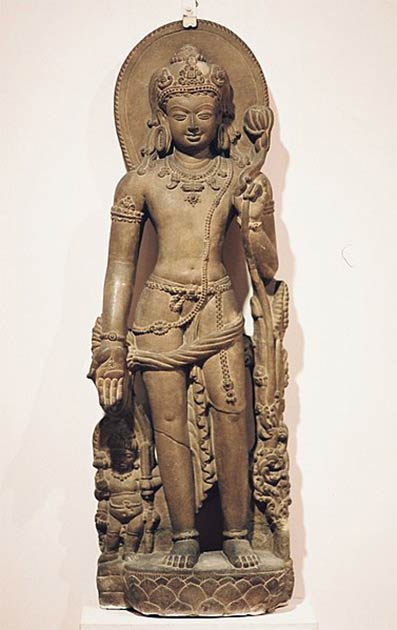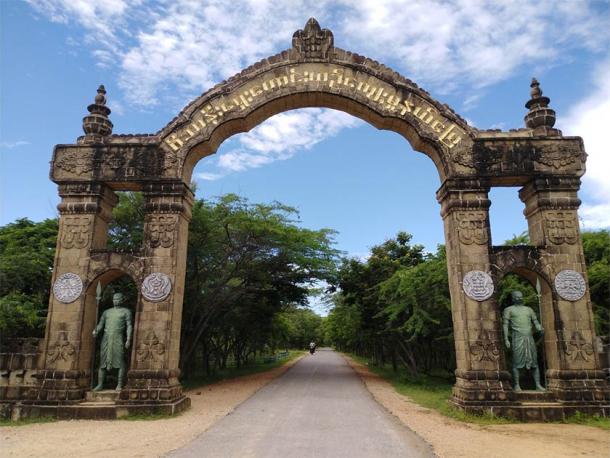Myanmar, once known as Burma, has a unique culture that has fascinated outsiders for many years. It also has a long tradition of Buddhism, which is in part a legacy of the Pyu City-States. Maingmaw is today an important heritage site as it was once one of the most significant city-states and contains many remains of the Pyu culture, which decisively shaped modern Burmese culture and society.
The History of Maingnaw: Rise and Fall of the Pyu City-State
The origin of Maingnaw and the other Pyu cities date back to the 2 nd century BC when the Pyu people entered what is now Myanmar from southern China . They may have originally been semi-nomadic but became settled over time.

Silver Pyu coins used from 5 th to 9 th century. (Image: Dser)
They established a number of villages, such as Maingmaw, and these quickly became major cities. The trade connections that they established, particularly with India, were also culturally important. Buddhism spread quickly among the Pyu city-states, which were not politically united. The Pyu were among the first south-east Asian societies to adopt Indian culture and were among the first Indianized societies in the region.

Sculpture of Khasarpana Lokesvara from Nalanda. Monument, India (Hyougushi / CC BY-SA 2.0 )
By about 7 th century AD, there were 18 major and Maingmaw was one of the few that was walled. It was located in a rich agricultural area Pyu cities with many irrigation canals and ironworks and was possibly the dominant power on the Kyaukse plain, in central Myanmar.
The Pyu went into decline when raiders from Nanzho, a south-eastern Chinese kingdom, devasted many of the city-states. It is thought that Maingmaw was not directly impacted as it lay in the south. According to the archaeological evidence, however, its economy went into decline.
Following the Nanzho attacks, the Bamar people established settlements and eventually founded the Pagan Empire, which slowly began to dominate the northern Pyu centers. Maingmaw was one of the last independent Pyu city-states and was only absorbed into the Pagan Empire in the 13 th century.

Beautiful ancient golden beads from Pyu period, Myanmar ( PK4289 / Adobe Stock)
It is likely that Maingmaw was once a wealthy, culturally sophisticated , urban center that had a material culture similar to southern Pyu cities such as Beikthano and Binnaka. The site was abandoned at an unknown date, but it appears to have been regarded as an important religious center by local people until modern times.
The city was only excavated in 1979, despite its historical importance and there are now plans to have Maingmaw listed as a UNESCO World Heritage site along with other similar Pyu centers.
The Maingnaw Remains
The site is circular and some of its original walls can still be seen. Similar in design to other Pyu sites, the inner rectangular wall is surrounded by an outer circular enclosure. The plan of the cities was based on a zodiac symbol and was intended to represent the heavens. Low walls of the rectangular public buildings are also similar to other Pyu centers.

The gates of Beikthano, the historical Pyu site of Myanmar ( CC BY-SA 4.0 )
A 19 th-century Buddhist temple in the center of the site was built on top of the remains of an ancient temple. The canal running through the city was once filled with barges possibly carrying trade goods or crops.
Among the open spaces at the site, some may have been used as markets, while the larger areas were possibly used as urban farms . Many of the ruins have not been identified as they are in poor conditions and all that remains are low, crumbling brick walls.
Visiting Maingnaw in Myanmar
This easiest way to get to the area is to rent a reasonably priced taxi from one of the major cities. Visitors are charged a fee to enter the location, and although there are information boards, there are no guides available. This location is well worth a visit as it is set in splendid scenery.
Top image: Maingmaw was one of the City States that is found throughout what is now Myanmar. Source: FlemishDreams
By Ed Whelan
Related posts:
Views: 1
 RSS Feed
RSS Feed

















 August 1st, 2020
August 1st, 2020  Awake Goy
Awake Goy  Posted in
Posted in  Tags:
Tags: 
















